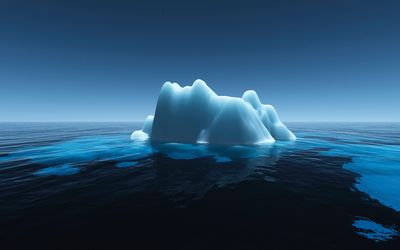Arctic shipping set to grow as sea ice melts
by Richard Milne,
2013-07-22 08:47:32.0
LONDON — Arctic shipping is set for a record year, as melting sea ice raises the prospect of an important new route for trade between Asia and Europe that shaves thousands of kilometres off the trip.
By Friday, the administrators of the Northern Sea Route — which follows the north coast of Russia — had granted permission to 204 ships to sail this year. Last year, only 46 ships sailed the entire length from Europe to Asia, up from four vessels just two years earlier.
Experts are forecasting a further large rise in Arctic shipping in coming decades, but say it will take several years before it is a commercially viable alternative to the southern route through the Suez Canal.
Valentin Davydants, captain of Russia’s Atomflot fleet of nuclear-powered icebreakers based in Murmansk, forecast a more than tenfold increase between Asia and Europe by 2021, by which time the route could be open eight months a year. South Korea’s Maritime Institute estimates the Northern Sea Route, previously known as the Northeast Passage, could account for a quarter of Asia-Europe trade by 2030.
"It is a given that the activity will increase and increase massively. But we believe the commercial potential will be limited for quite a few years," said Sturla Henriksen, director-general of the Norwegian shipowners’ association at a conference on the Arctic.
Jong-Deog Kim, division director of the Korean Maritime Institute, said: "If some conditions are met the Northern Sea Route will become an attractive option in terms of time and money. I think it will be more used if the current problems of the established routes get worse."
The sailing time from Rotterdam to Kobe, in Japan, or Busan, in South Korea, with ships crossing between the Arctic and Pacific via the Bering Strait between Siberia and Alaska, should be 23 days compared with 33 days via the canal, according to Mr Davydants. From the northern Russian port of Murmansk the journey would take 18 days using the Northern Sea Route as opposed to 37 with the canal.
Mr Davydants forecasts that, by 2021, 25-million metric tons of liquefied natural gas and oil could be transported out of the Russian Arctic on top of 15-million tons of Asia-Europe trade, up from the 1.26-million tons transported between the two continents last year via the Northern Sea Route.
The potential for Arctic shipping is also drawing intense interest from European nations.
Iceland is weighing up whether to build an Arctic port in the country’s northeast, according to Germany’s Bremenports. After discussions with Iceland’s president, the German group is looking at the viability of a project at Finna Fjord, which would be ice-free all year.
The surge in Arctic shipping is already prompting fears over safety and accidents.
Financial Times

Picture: THINKSTOCK
LONDON — Arctic shipping is set for a record year, as melting sea ice raises the prospect of an important new route for trade between Asia and Europe that shaves thousands of kilometres off the trip.
By Friday, the administrators of the Northern Sea Route — which follows the north coast of Russia — had granted permission to 204 ships to sail this year. Last year, only 46 ships sailed the entire length from Europe to Asia, up from four vessels just two years earlier.
Experts are forecasting a further large rise in Arctic shipping in coming decades, but say it will take several years before it is a commercially viable alternative to the southern route through the Suez Canal.
Valentin Davydants, captain of Russia’s Atomflot fleet of nuclear-powered icebreakers based in Murmansk, forecast a more than tenfold increase between Asia and Europe by 2021, by which time the route could be open eight months a year. South Korea’s Maritime Institute estimates the Northern Sea Route, previously known as the Northeast Passage, could account for a quarter of Asia-Europe trade by 2030.
"It is a given that the activity will increase and increase massively. But we believe the commercial potential will be limited for quite a few years," said Sturla Henriksen, director-general of the Norwegian shipowners’ association at a conference on the Arctic.
Jong-Deog Kim, division director of the Korean Maritime Institute, said: "If some conditions are met the Northern Sea Route will become an attractive option in terms of time and money. I think it will be more used if the current problems of the established routes get worse."
The sailing time from Rotterdam to Kobe, in Japan, or Busan, in South Korea, with ships crossing between the Arctic and Pacific via the Bering Strait between Siberia and Alaska, should be 23 days compared with 33 days via the canal, according to Mr Davydants. From the northern Russian port of Murmansk the journey would take 18 days using the Northern Sea Route as opposed to 37 with the canal.
Mr Davydants forecasts that, by 2021, 25-million metric tons of liquefied natural gas and oil could be transported out of the Russian Arctic on top of 15-million tons of Asia-Europe trade, up from the 1.26-million tons transported between the two continents last year via the Northern Sea Route.
The potential for Arctic shipping is also drawing intense interest from European nations.
Iceland is weighing up whether to build an Arctic port in the country’s northeast, according to Germany’s Bremenports. After discussions with Iceland’s president, the German group is looking at the viability of a project at Finna Fjord, which would be ice-free all year.
The surge in Arctic shipping is already prompting fears over safety and accidents.
Financial Times





















Change: -1.84%
Change: -2.22%
Change: -3.22%
Change: -2.18%
Change: -0.22%
Data supplied by Profile Data
Change: -0.36%
Change: -0.13%
Change: -1.84%
Change: 0.00%
Change: 0.00%
Data supplied by Profile Data
Change: -0.11%
Change: 0.08%
Change: 0.13%
Change: 0.44%
Change: -0.11%
Data supplied by Profile Data
Change: -0.02%
Change: -0.11%
Change: -0.39%
Change: -0.80%
Change: -2.32%
Data supplied by Profile Data